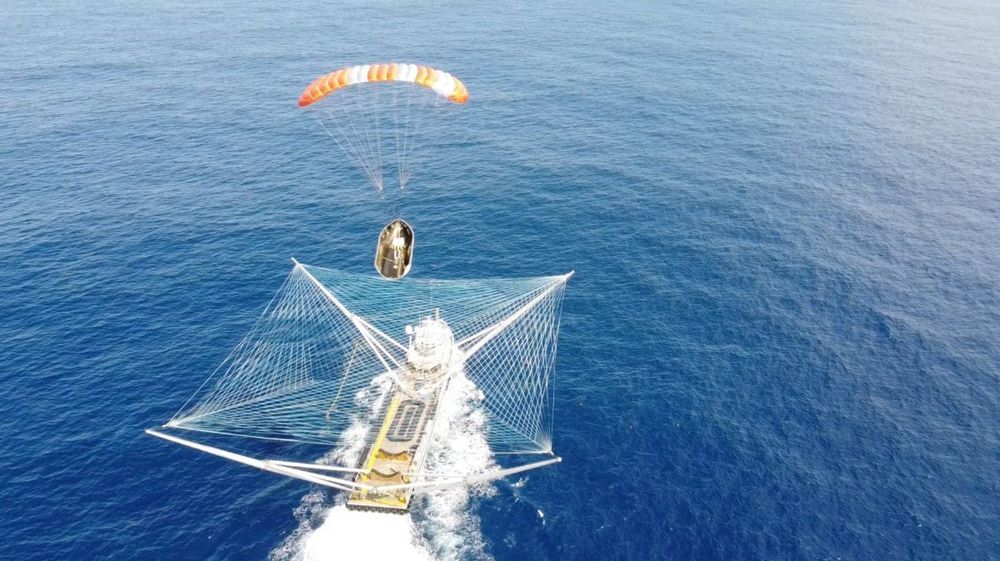SpaceX, the Elon Musk-led company that recently became the first business in history to send astronauts into Earth’s orbit, is parlaying its successes into big money.


SpaceX, the Elon Musk-led company that recently became the first business in history to send astronauts into Earth’s orbit, is parlaying its successes into big money.
R Bamford 1, K J Gibson 2, A J Thornton 2, J Bradford 1, R Bingham 1,6, L Gargate 1,3, L O Silva 3, R A Fonseca 3, M Hapgood 1, C Norberg 4, T Todd 5 and R Stamper 1
Published 4 November 2008 • 2008 IOP Publishing Ltd Plasma Physics and Controlled Fusion, Volume 50, Number

Rocket Lab, which gives small spacecraft dedicated rides to Earth orbit, plans to go interplanetary soon with an astrobiology mission to the second rock from the sun.

No, dear Pope Francis. I 100% share the concept of the brotherhood of all humans. There can never be too many calls for brotherhood. What I do not share in the most absolute way is that it is “useless to go to the Moon, if we are not brothers on Earth”. Quite opposite: eight billion humans, closed on the surface of our mother planet, will not be able to be brothers unless they will achieve new resources, new spaces, a new horizon of development. Remaining confined to the ground we would find ourselves competing in a zero sum game, or worse, an increasingly negative sum game, considering how much the resources of planet Earth, especially the environmental ones, are already scarce. Once again, it is up to people of good will to refuse to remain and fight among brothers and sisters, and to resume the courageous path of exploration, the search for new resources, the opening of new frontiers and human settlement in space. Properly in order to nourish the many brothers and sisters in peace, harmony and freedom. Otherwise mafias, tyrannies, selfishness, fratricide and infanticide will prevail, as history unfortunately testifies, every time a world has become small and suffocating. Pandemics such as covid19 also teach us that we will be more and more forced into immobility in our homes, if we will insist on remaining in increasing numbers in a philosophically and physically closed world. Let alone “grow and multiply”. Now, from a Jesuit Pope I would have expected at least that he would not run into the most obvious clichés, like “before going into space we must solve problems on Earth”. Quite the contrary: if we will not urgently kick-off the civil expansion into space, not only will we not be able to solve Earth’s problems, but they will get worse and worse, bringing civilization to a very dangerous point of no return.
The Feast of the Assumption of Mary into Heaven coincides with August 15th. Bergoglio remembers those who do not have the opportunity to celebrate. And on the issue of the Nile between Egypt, Ethiopia and Sudan he calls for dialogue and brotherhood.
NASA and SpaceX are targeting no earlier than Oct. 23 for the first operational flight with astronauts of the Crew Dragon spacecraft and Falcon 9 rocket to the International Space Station as a part of the agency’s Commercial Crew Program. NASA’s SpaceX Crew-1 mission will be the first of regular rotational missions to the space station following completion of NASA certification.
The mission will carry Crew Dragon commander Michael Hopkins, pilot Victor Glover, and mission specialist Shannon Walker, all of NASA, along with Japan Aerospace Exploration Agency (JAXA) mission specialist Soichi Noguchi for a six-month science mission aboard the orbiting laboratory following launch from Launch Complex 39A at NASA’s Kennedy Space Center in Florida.
Crew-1 will launch in late October to accommodate spacecraft traffic for the upcoming Soyuz crew rotation and best meet the needs of the International Space Station. Launch will follow the arrival of NASA astronaut Kate Rubins and cosmonauts Sergey Ryzhikov and Sergey Kud-Sverchkov of the Russian space agency Roscosmos aboard their Soyuz MS-17 spacecraft and the departure of NASA astronaut Chris Cassidy and cosmonauts Anatoly Ivanishin and Ivan Vagner from the space station. The launch timeframe also allows for a crew handover with NASA’s SpaceX Crew-2 mission next spring.

First Twitter and now YouTube is under attack by hackers promoting Bitcoin scams through live broadcasts using old Elon Musk speeches and a fake broadcast of the launch that SpaceX and NASA made last week. The hackers appear to have compromised several high-profile YouTube channels and today the account of youtuber Jon Prosser was the object of this attack, his channel is broadcasting with 40 thousand viewers and the attackers have already received around 4 thousand dollars in Bitcoins.
It may also interest you: What are cryptocurrencies?
Last week there were several reports that people who wanted to see the launch of the SpaceX clicked on videos that looked official and that they were posted by seemingly legitimate YouTube channels with hundreds of thousands of subscribers and were found with messages from “Bitcoin giveaway” urging them to send Bitcoin for double cash back, a common scam tactic. Today Jon Prosser reports that something similar is happening on his channel.

Crews are in position to capture this memorable event near Pensacola. The splashdown is scheduled around 1:40 PM.
More information: https://bit.ly/3glajLa